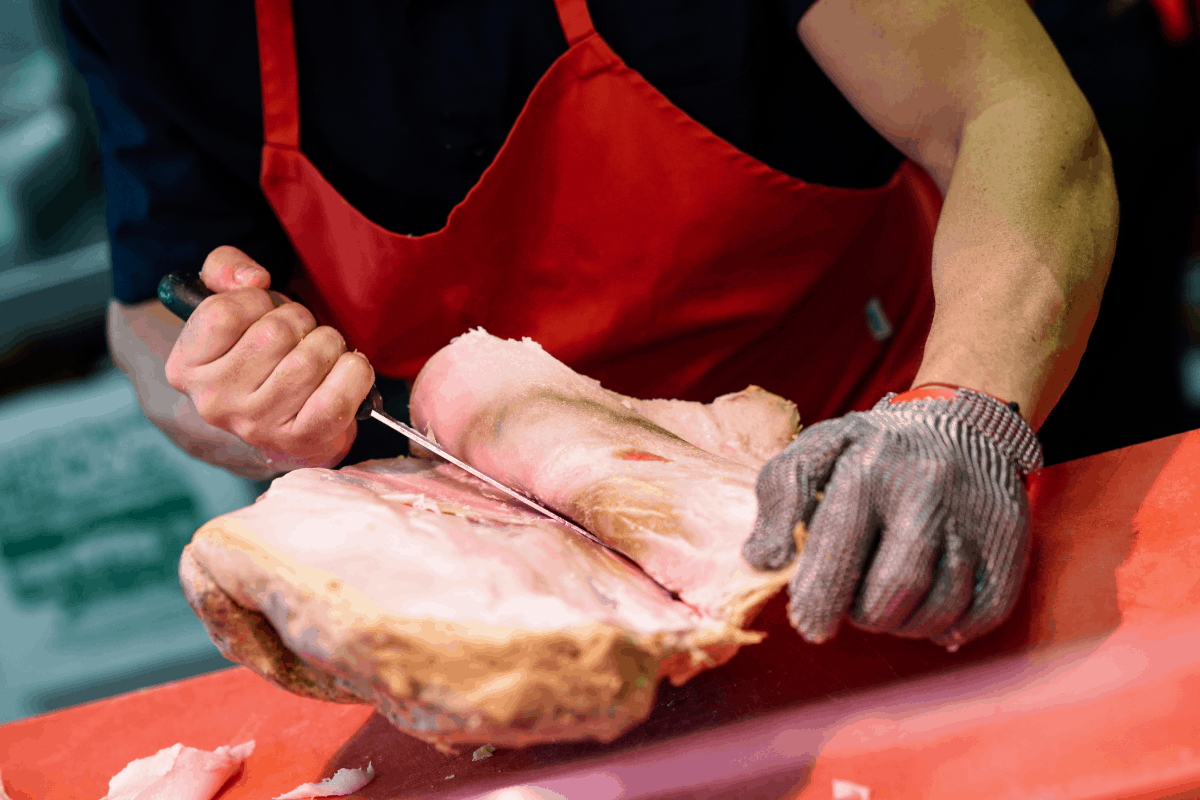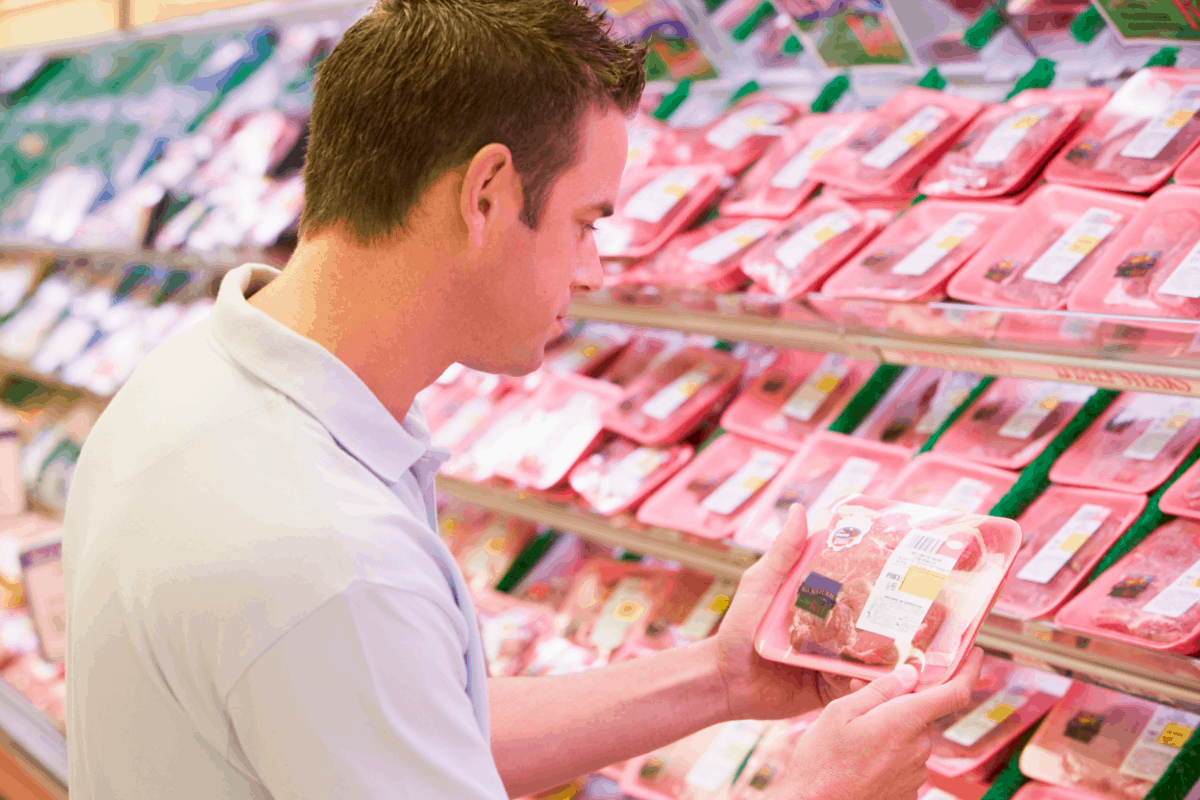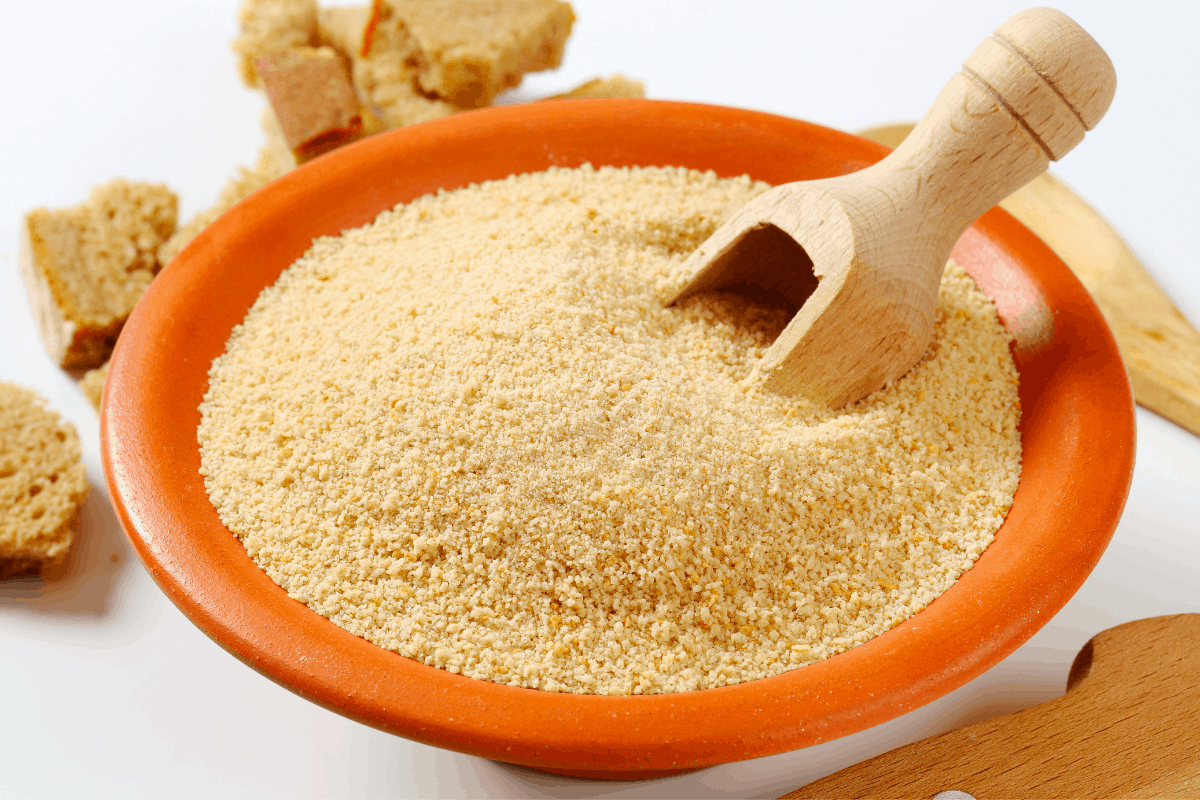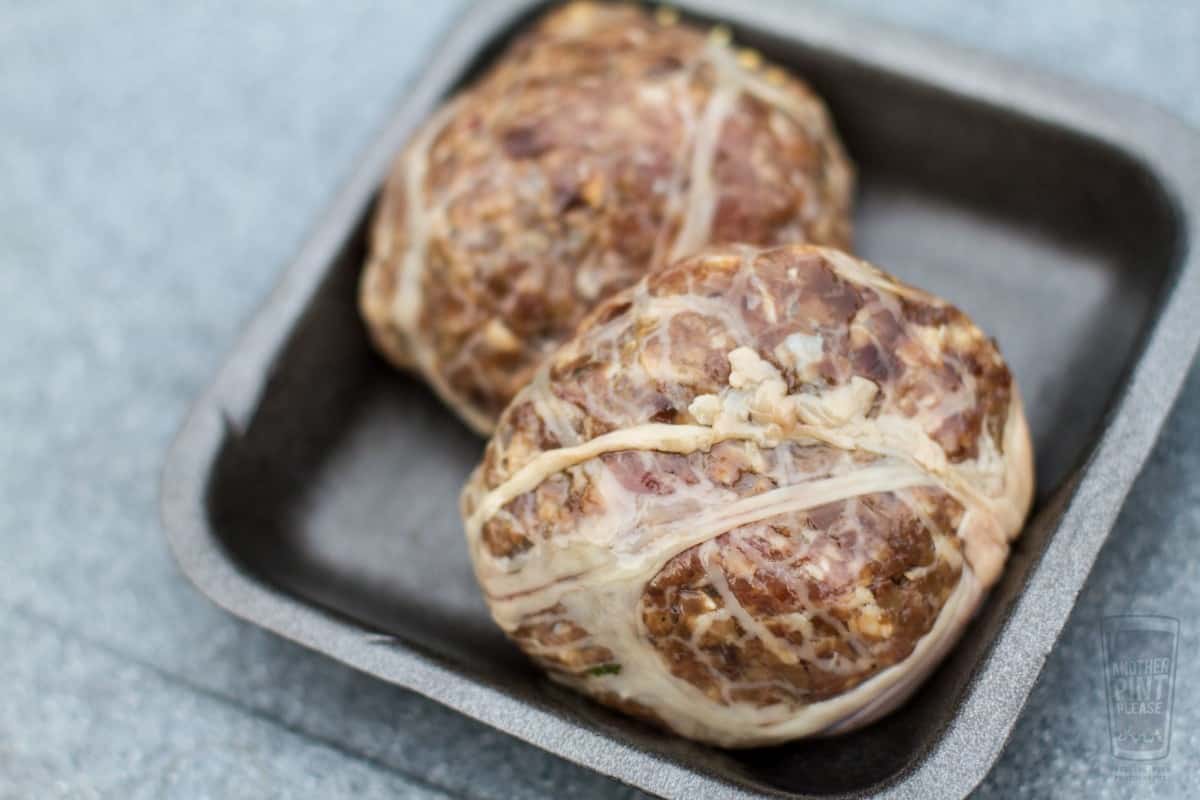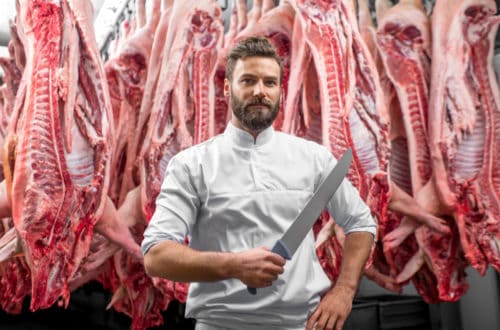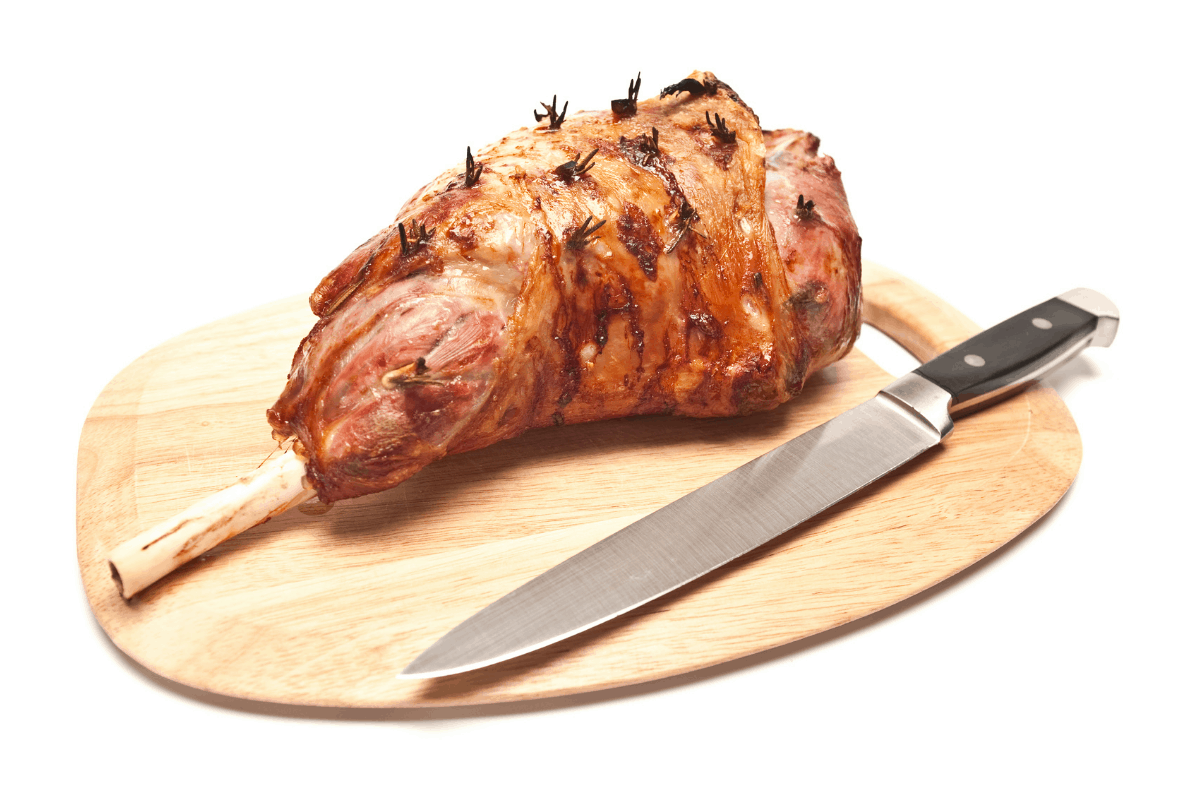If you are considering doing some basic home butchering on your own meat, then there are some essential tools of the trade that you will need.
Depending on the type of meat you plan to cut up, and how much processing you wish to do, the list will change.
However, to get started in the beginning, you can get by with just 5 basic items.
So what are the basic essential tools needed for simple home butchery? To get started with home butchering, the following 5 tools are recommended. These will allow you to perfom many of the smaller butchery tasks you would be likely to want to attempt.
- A Boning Knife
- A Steak Knife
- A Butchers Steel
- A Bone Saw
- A Gauntlet Glove / Apron
We are going to talk about why you need these 5 essential butchering tools, and give our recommendations as to which are good brands to use.
There are many other items that will make your butchering journey a little easier, but these are not essential in the beginning, and can be added as you progress into more skilled butchery.
For now let’s just focus on the 5 items listed above.
The Boning Knife

The boning knife is probably the most essential bit of kit in the butchers arsenal.
If you could only afford to buy one item off of the list of 5, this would be the one to choose.
Now, as the name suggests, this knife is used for removing the bones from the meat. However it is versatile enough to act as a filleting knife for fish, and also for skinning and cutting meat.
There are various types and lengths available, but they all essentially do the same job. As you get more involved in your butchering journey, you may wish to experiment with the different types to see which you find the most comfortable to use.
Some of the differences between the boning knives include:
- 5″, 6″, or 7″ Blade
- Stiff Blade
- Semi Stiff Blade
- Flexible Blade
- Straight Blade
- Curved Blade
- Wide Blade
- Narrow Blade
- Wooden Handle
- Nylon Handle
- Polypropylene Handle
If I were to advise you to pick one knife to begin with, it would be the 6″ semi stiff curved blade knife with the nylon handle.
I used this knife for most of my butchering career, however there were times that I fluctuated between the straight blade and rigid.
I found the 6″ victorinox semi flexibile curved blade gave just that little bit extra versatility when working around awkward bones or smaller boned meat such as pork or chicken.
The brand that I valued most during my career and will always turn to first is Victorinox.
I have been around victorinox knives in every butchers shop that I have worked in, and have used these for most of my career. They offer a quality product that delivers every time. The knives hold their edge really well, and last for years.
There are some cheaper brands on the market, and some of those will work perfectly fine for a beginner to meat cutting.
As you gain experience and begin to experiment with different knife shapes, sizes and blades, you will begin to notice the difference in a quality knife and an adequate knife.
I have a feeling that many of you will settle for having at least one victorinox knife within your collection, and you’ll find that that will become your ‘Go To’ knife more often than not.
Here are 2 recomendations for quality boning knives that are available on Amazon.
6″ Victorinox Curved Flexible Blade Boning Knife
6″ F.Dick Straight Stiff Blade Boning Knife
Obviously I have listed the Victorinox of my choice, however as mentioned, the cheaper option will also get the job done just fine, while you decide if butchery is something you like doing.
The Steak Knife

The steak knife allows the butcher to cut through large pieces of meat with ease. A 10″ long blade allows comfortable slicing of steaks and roasting joints with minimal cuts.
Steak knives usually come with an 8″, 10″ or 12″ blade. I personally like the feel of the 10″, having felt that the 8″ can be a little restrictive on cutting large faced cuts such as the top sirloin steak, and the 12″ being slightly too long for comfortable control.
If you are looking to break down whole carcasses, or butchers large primal cuts, then a steak knife would be a worthwhile investment in your equipment inventory.
The Butcher Steel

The steel is used for putting the ‘edge’ back onto the blade, NOT for sharpening as some people mistakenly think.
As a knife is used, the sharpp edge becomes curled and dull. Although this is not always noticeable to the eye, you will get to ‘feel’ when the knife is not cutting at its optimal performance.
Running the blade along the steel removes the curled edge and realigns the cutting edge of the knife.
Learning to properly steel a knife will allow you to work much more safely and efficiently, as well as prolong the life of your knife with the reduced need for actual sharpening.
There are a variety of different steels available on the market and each type has a particular selling point. Here are some of the most commonly used steel options.
- Diamond Oval or Round Steel
- Ceramic Oval or Round Steel
- Carbon Steel
Not only are the steels made from different materials, they also differ from smooth, medium, and coarse faced, as well as different lengths.
Depending on the type of knives you have and the type of butchery you are doing will influence your choice of steel.
The following video offers some great insights into the different steels available in the industry, and when to use them.
Check out the large variety of different butchers steels available on Amazon to find the one that most fits your butchering needs.
The Bone Saw

Depending on they type of butchery you plan on doing will determine whether you need to invest in a bone saw.
For smaller butchering tasks, you could probably get away without the need for one, however if you are looking to deal with larger carcass meat, then a bone saw would be invaluable.
As you can imagine, the bone saw does just what its name suggests, it cuts through bones!
Whether breaking down the whole carcass, cutting porterhouse or T-bone steaks, or sawing along the spine to split pork loins, a bone saw will make short work of the job.
There are several different versions of bone saws on the market at different price points. If nothing else, I would recommend getting one that has a quick release/locking blade handle.
This model is a polpular one sold on Amazon!
Butchery Protective Equipment
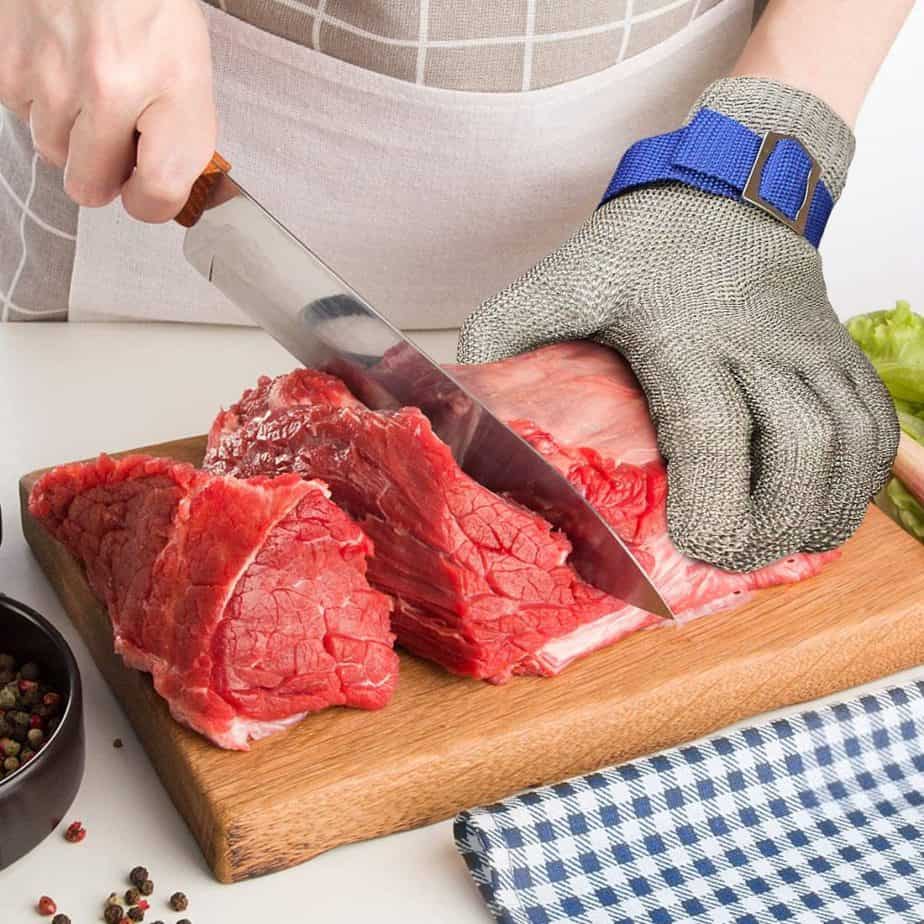
Wearing some form of protective equipment is paramount when starting out with butchering. As you can imagine, using very sharp knives can result in very nasty accidents if you make a mistake. It is not an exageration to say that a slip could result in death, believe me, when you are working at waist height and the knife slips, it is not very far from the femoral arterty!
Well, now that I have scared the life out of you, let’s look at how to keep you safe!
Mesh Gloves
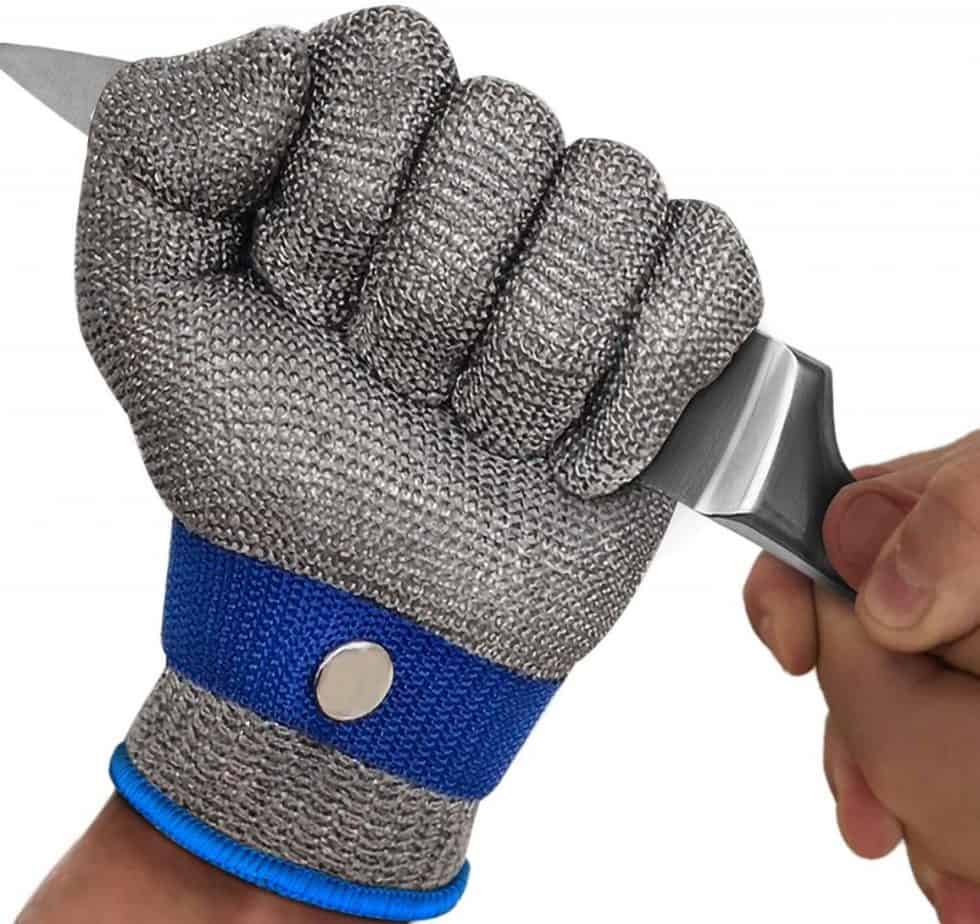
A staineless steel mesh glove is an investment that every learning butcher should purchase at the minimum of safety. Wearing a cut resistant glove on the hand that is NOT holding the knife will save you many little cutting accidents, and a few serious ones.
A big part of butchery is pulling the meat out of the way to expose the bone and insert the knife, therefore you hand is often in close proximaty to the knife and an easy target for a knife slip.
As you become experienced and used to working with a knife, you may not feel the need to wear the glove every time, however, in the beginning of your meat cutting journey, it is highly recommended.
Mesh Gloves are fairly cheap to buy and a worthy investment in your personal safety. Ensure you are buying a quality product that will actually prevent the knife from cutting you, and not a cheaper version that will cut when the knife comes in contact with it!
MAFORES Cut Resistant Stainless Steel Glove on Amazon.
Mesh Apron
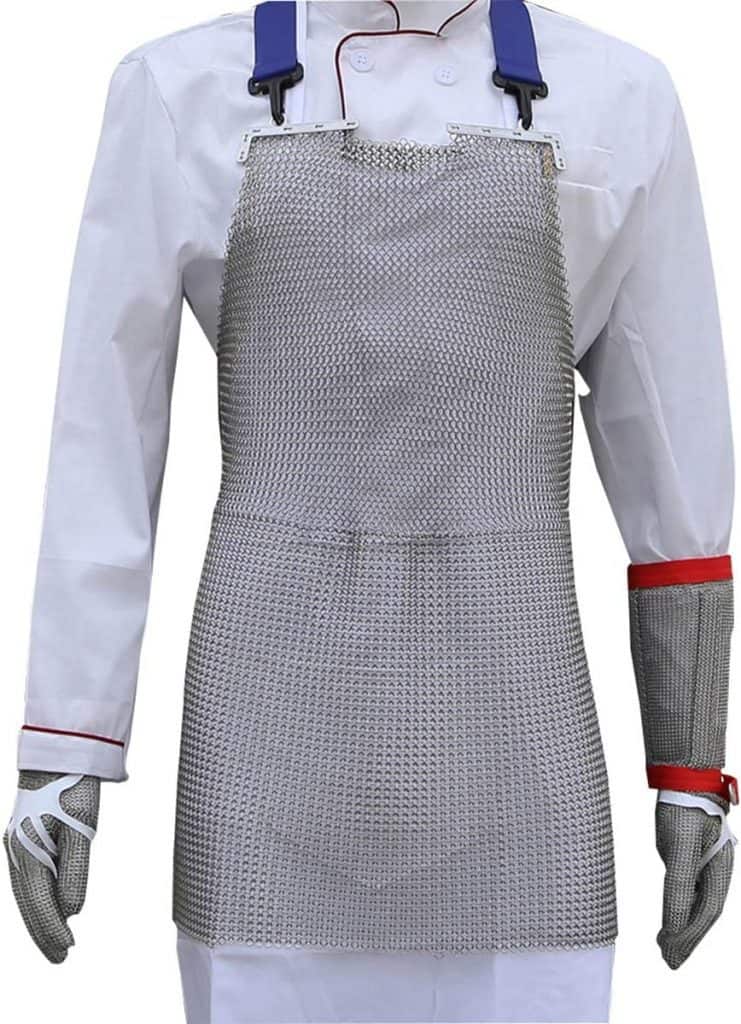
A mesh apron is a further piece of protective equipment that will potentially save you from a nasty knife slipping experience.
However, unless you are looking to work fast, or do some major butchery endeavours, this may be a little overkill for your needs. These are usually worn by butchers who are doing piecetime butchery and have to work at speed.
Providing you use a sharp knife, a mesh glove, and you TAKE YOUR TIME when cutting the meat, you should be able to get by without the need for a mesh apron. Maintaining control of the knife and concentrating on what you are doing at all times should see you able to work safely most of the time.
If you feel you want the added safety of the mesh apron, you can find them on Amazon here.
So now you know the basic requirement of the equipment required to perform some basic home butchery. Although there are many other items that will make your butchery journey easier or more inventive, you will get by just fine with these tools to begin with.
If you are interested in a career in the meat industry, take a look at our article defining the different career choices that involve meat cutting.
Slaughterman, Butcher & Meatcutter – Same Meat, Different Roles!
